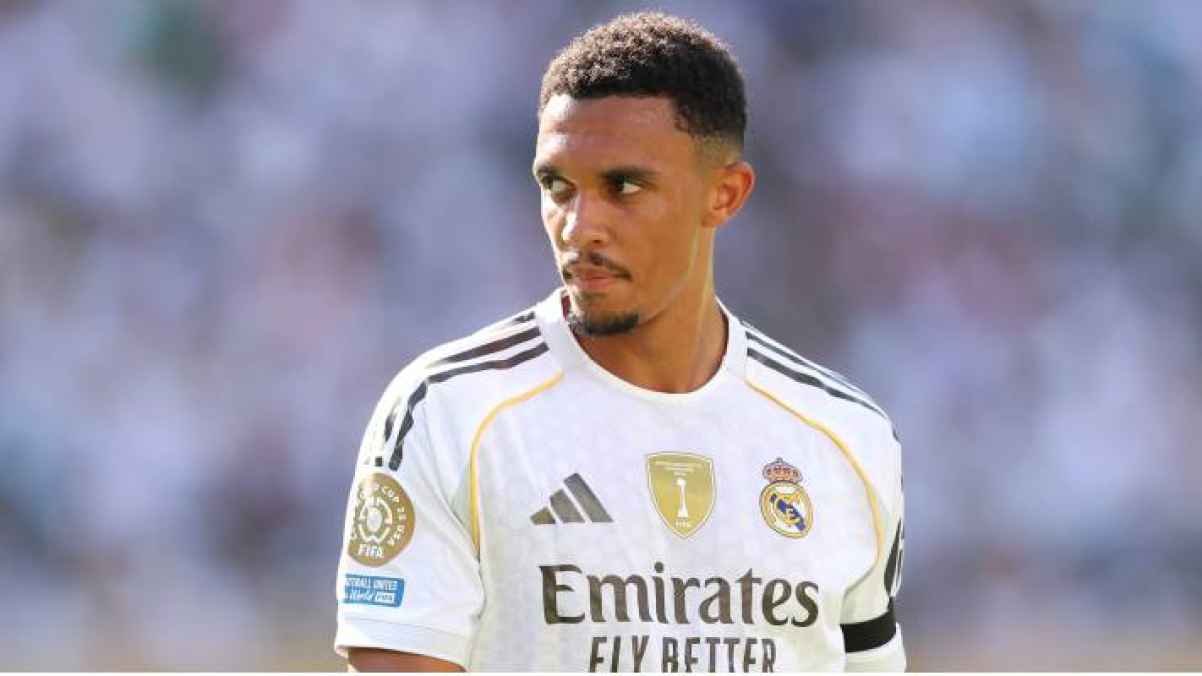How Arnold’s difficulties caused a “centre crisis” for Valverde at Real Madrid

How Arnold’s difficulties caused a “centre crisis” for Valverde at Real Madrid
Real Madrid coach Xabi Alonso faces his first real tactical dilemma at the club — a complex issue not due to a lack of talent, but to difficulty integrating it. According to a detailed report by Marca, the main challenge is English star Trent Alexander-Arnold’s struggle to adapt to Alonso’s philosophy, which has a direct negative impact on one of the team’s key pillars: Uruguayan Federico Valverde.
Valverde, the loyal “soldier” who has often sacrificed his preferred position for the team’s benefit, finds himself once again “trapped” by multiple roles, forced to play as a temporary right-back, threatening his performance and limiting his chances to operate in his true midfield role.
The “Alexander-Arnold” puzzle
When Real Madrid signed Alexander-Arnold, he was seen as the perfect attacking solution for right-back. But the report notes that the English defender “hasn’t yet proven himself,” for two main reasons:
-
Radical tactical difference: Arnold came from a system at Liverpool where he operated as an advanced playmaker, given complete freedom to advance, cross, and join the midfield, with heavy defensive cover from midfielders such as Jordan Henderson.
-
Alonso’s system: It seems to require a primarily “classic full-back.” As a legendary midfielder, Alonso values tactical discipline, 1v1 defensive solidity, and proper positioning before offensive ventures. Arnold, whose pure defensive abilities are still questioned, struggles to adapt to this radically different tactical approach.
-
Injury setback: Compounding the issue, Arnold suffered a muscle injury last September, missing critical weeks meant for adapting to Alonso’s instructions and understanding teammates’ dynamics. Now returning, he is still “tactically behind” his peers.
Valverde: the “perfect victim”
These difficulties, combined with Dani Carvajal’s absence (injury or fatigue), left Xabi Alonso no choice but to rely on Federico Valverde.
Valverde, who prefers a “box-to-box” midfield or right-wing role, had to temporarily revert to right-back. Despite his speed and fighting spirit allowing decent performance, this position limits his creative impact, depriving Real Madrid of a key “engine” in midfield and turning a world-class midfielder into a mere gap-filler.
“Midfield crowding… no room for the captain”
The problem deepens when examining midfield. Ordinarily, Valverde could find a spot, but with returning stars, that’s impossible.
The last El Clásico featured Jude Bellingham and Eduardo Camavinga as starters, with Aurélien Tchouaméni as the central pivot. The three central midfield spots were fully occupied: Bellingham as the main star, Camavinga for balance, and Tchouaméni as the defensive wall.
This “luxury crowding” blocks Valverde entirely. His only chance to remain in the starting XI is to accept the sacrificial right-back role, reluctantly.
Alonso’s tactical constraints
Interestingly, as the report notes, Alonso “rarely relies on three defenders.” This tactical choice worsens the crisis. If Alonso switched to a 3-4-3 system (which Arnold excels at), Alexander-Arnold could play as a wing-back, gaining attacking freedom and defensive relief, while Valverde could occupy his natural midfield or right-wing position.
By insisting on a 4-3-3 or 4-2-3-1, Alonso places Arnold in an unsuitable role and forces Valverde to pay the price.
The result, the report explains, is that “Valverde’s space on the right side is limited” (playing as a traditional full-back, not a wing), which “increases difficulty maintaining his usual level” and threatens his continuity in the starting XI once Arnold or Carvajal are fully fit.
